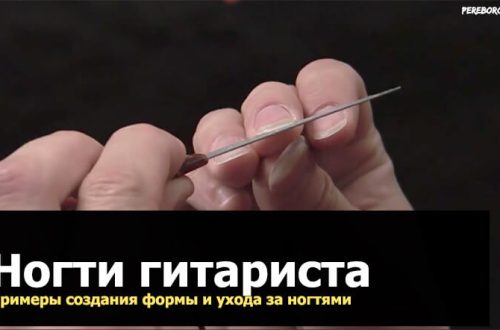
Waltz by F. Carulli, sheet music for beginners
“Tutorial” Guitar Lesson No. 15
The waltz of the Italian guitarist and composer Ferdinando Carulli was written with a change of key (in the middle of the piece, the F sharp sign appears at the key). Changing the key greatly diversifies the piece, bringing a new sound palette to it and turning a simple guitar piece into a small beautiful piece. This waltz is primarily interesting because in it you will for the first time combine both sound extraction techniques – tirando (without support) and apoyando (with support), differentiating sounds depending on their significance and mastering a new playing technique – descending and ascending legato.
To begin with, let’s recall lesson No. 11 Theory and guitar, which talked about the technique of playing “apoyando” – playing based on an adjacent string. In F. Carulli’s waltz, the theme and basses must be played with this particular technique, so that the theme stands out in its sound and is louder than the accompaniment (the theme here is: all sounds on the first and second strings). And the accompaniment should be played using the “tirando” technique (the accompaniment here is the third open string). Only subject to such sound extraction will you get a relief-sounding work, so pay all your attention to the versatility: bass, theme, accompaniment!!! Difficulties may arise at first, and therefore do not try to master the entire piece – set yourself the task of first learning and playing the first two, four lines, and only then move on to the next part of the waltz, having mastered the legato technique, which will be discussed later.
From the previous lesson No. 14, you already know that in the musical text, the slur sign connects two identical sounds into one and sums up its duration, but this is not all you need to know about the slur. A league placed over two, three or more sounds of different heights means that it is necessary to play the notes covered by the league in a coherent manner, that is, accurately maintaining their duration with a smooth transition from one to another – such a coherent performance is called legato (Legato).
In this lesson, you will learn about the “legato” technique used in guitar technique. The “legato” technique on the guitar is a technique of sound extraction very often used in performing practice. This technique has three methods of sound production. Using the Waltz F Carulli as an example, you will get acquainted with only two of them in practice.
The 1st method is the “legato” technique with an ascending order of sounds. Pay attention to the beginning of the fifth line of the waltz, where two slurred notes (si and do) form an out-beat (not a full measure). To perform the ascending “legato” technique, it is necessary to perform the first note (si) as usual – extracting the sound by hitting the string with the finger of the right hand, and the second sound (do) is performed by hitting the left hand finger, which falls with force to the 1st fret of the 2nd strings, making it sound without the participation of the right hand. Pay attention to the fact that the first sound (si) performed in the usual way of sound extraction should always be slightly louder than the second (do).
2nd way – descending legato. Now turn your attention to the middle of the penultimate and last line of musical text. You can see that here the note (re) is ligated with the note (si). To perform the second method of sound extraction, it is necessary to perform the sound (re) as usual: the finger of the left hand on the 3rd fret presses the second string and the finger of the right hand extracts the sound. After the sound (re) has sounded, the finger of the left hand is removed to the side (down parallel to the metal fret fret) causing the second open string (si) to sound without the participation of the right hand. Pay attention to the fact that the first sound (re) performed in the usual way of sound extraction should always be slightly louder than the second (si).


PREVIOUS LESSON #14 NEXT LESSON #16





